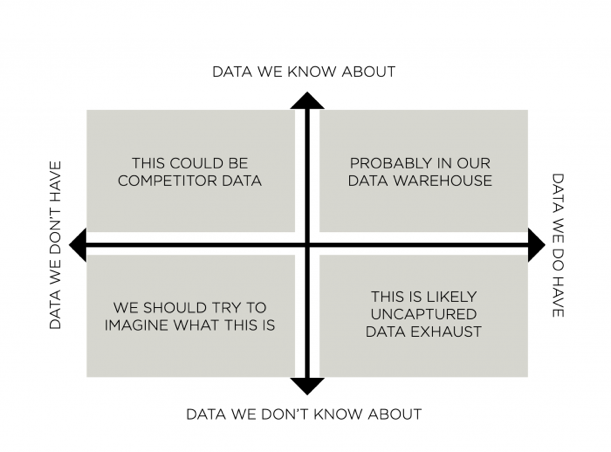For over 30 years we’ve been trying to harness data. Tech giants like LinkedIN, Google and Amazon own their markets by being smart with data. Today any organization can take advantage of abundant storage and affordable processing power to build game-changing insights. Whether you’re looking at continuous efficiency improvements or to transform your industry, you should be thinking strategically about your data.
Why bother with Data Strategy?
Without a data strategy your revenues will continue to grow over time. Even so, new entrants with data enabled propositions will start to eat away at those revenues. Uber and AirBnB have totally disrupted their industries by better use of data, a trend in every industry. To survive it’s vital to understand how the data in and around your business will transform business models, and to provision for its acquisition, analysis and leverage.
What is Data Strategy?
Data Strategy is a strategic plan to manage data as a corporate asset. It ensures a sustainable competitive advantage in the future and with a positive rate of return on investment. As with any strategic asset, its absence jeopardizes the future wellbeing of the organization.
What happens without a strategic view of data?
Your current competitors will be optimizing and reducing costs and targeting your customers with more relevant communications. Your vendors adding data-rich services that connect them directly to your customers. When data becomes an afterthought, your agility is reduced by delays launching new insights, features, and products. Most significantly an eye out for startups in your industry that have worked out how to disintermediate your business.
Where is your data?
The stuff that’s in your databases… yeah, you know about that. But what about all the other data? The most interesting new products come from data you never knew you had.

Most organizations do not realize the goldmine of data that they are sitting on
Three outcomes of a good Data Strategy
- You’ll anticipate data inspired and driven products. Products you can build internally or that you may find your competitors are already building
- You’ll ensure that new systems are data-ready. Acquisition, pipelines, storage and analytic tools are already in place
- You’ll acquire the data you need in advance to capture the 12 months’ history that is generally required for analysis
Where to start?
It is a relatively straightforward and logical exercise, but it does require some fresh thinking. Here are the six steps I’d recommend:
- Inventory of the buckets of data available, the systems and key transaction tables and reference tables.
- Look at how that data is being utilized to make decisions.
- Ask if the combined data is being used to its full potential?
- Ask if decisions are being made wanting of more data?
- Are people craving data to improve internal process or present customers with more insight?
- Can you envisage whole new products and services where data is part of the proposition?
Ideally you would have a guide that would take your executives through a methodical process. They would work through from today’s pain-points and risks to the future opportunities and vision. You would map out the strategy for data acquisition, storage, analysis and product development.
When is the best time to begin?
When you are putting in a new system or suite of systems, undertaking some sort of digital transformation or setting the technology plan to absorb a newly acquired business. These are normally pivotal times to create action, gain maximum internal support and deliver a stream of results quickly.






